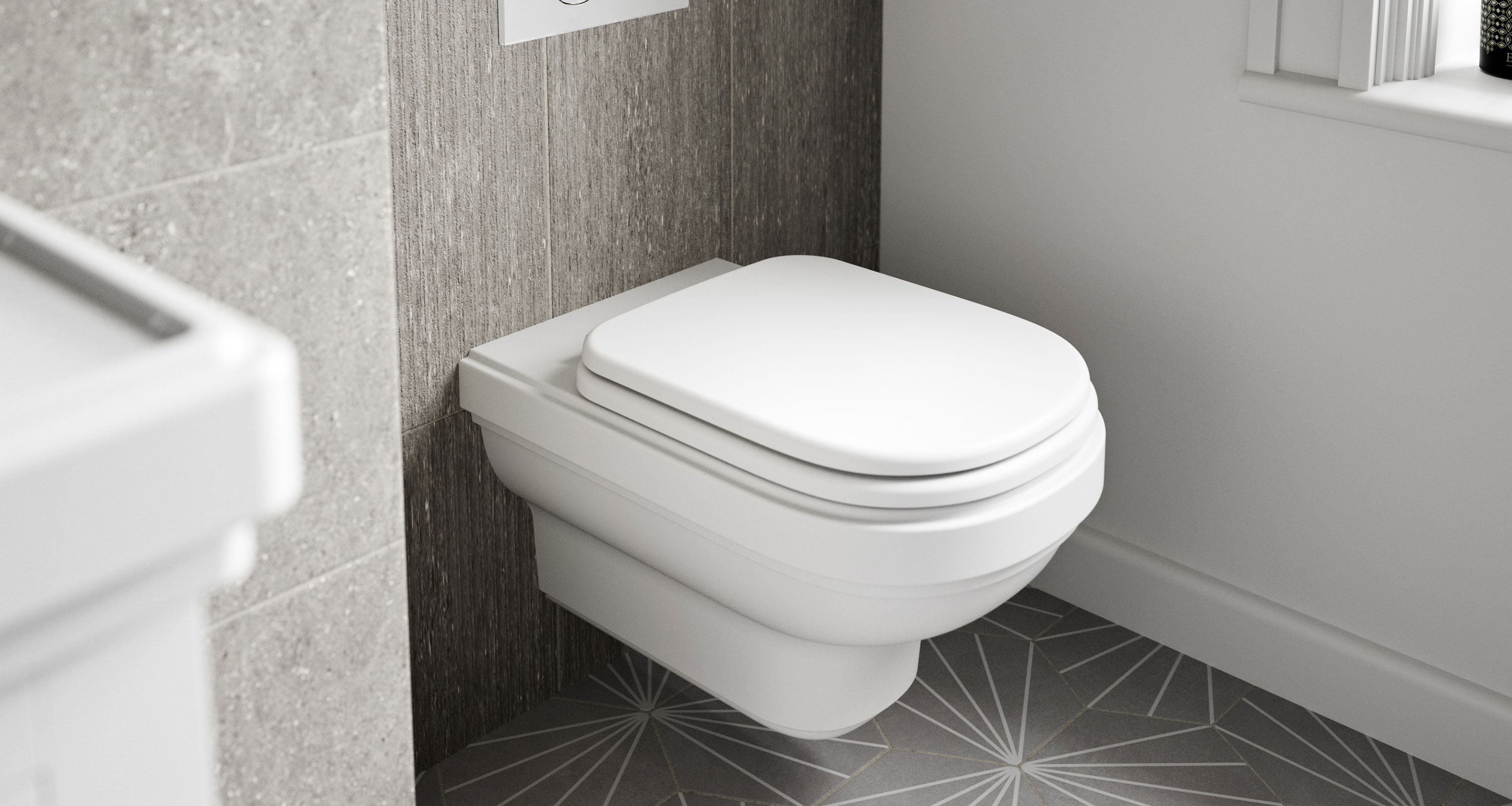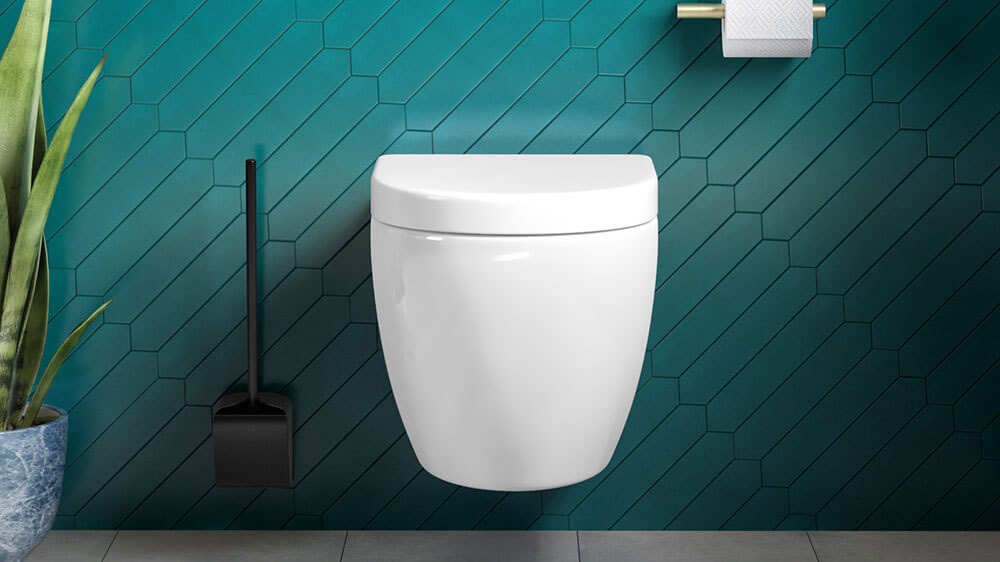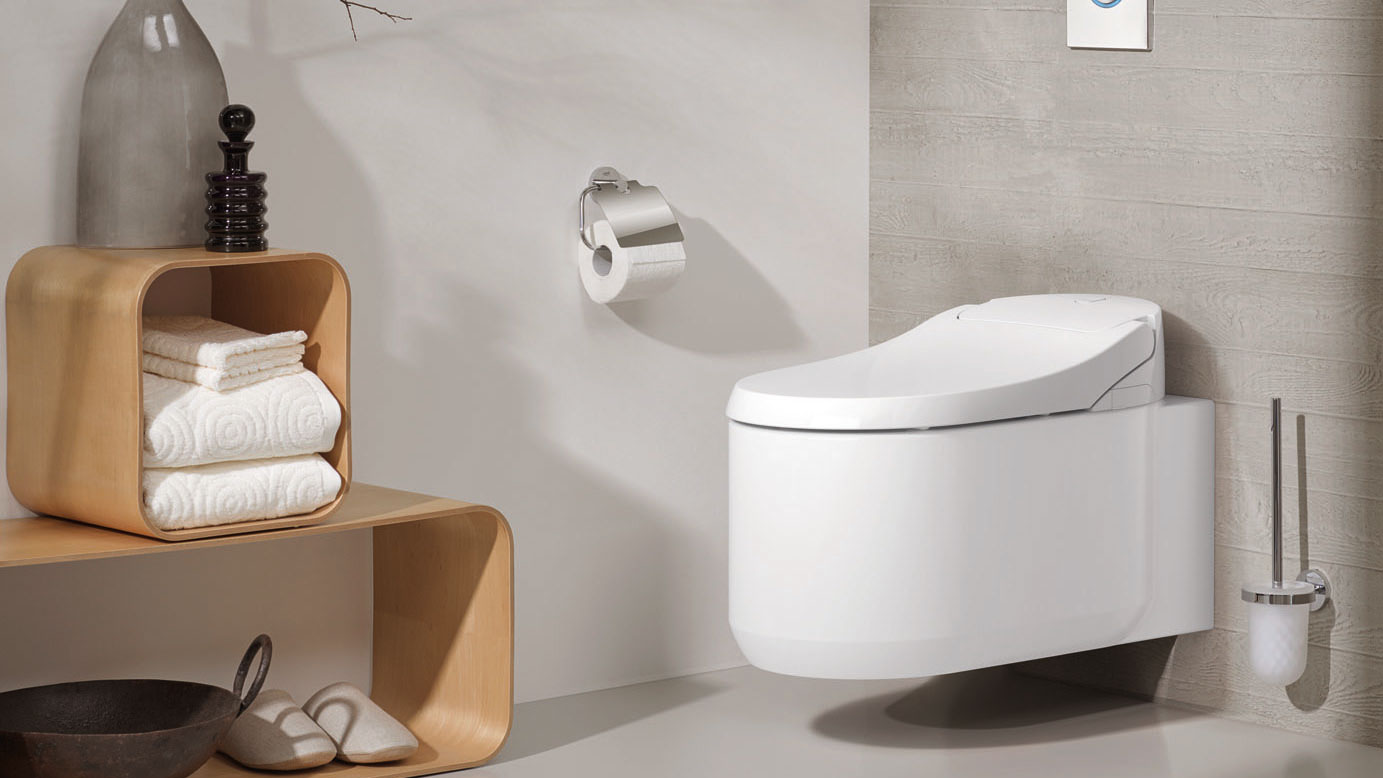What is a wall hung toilet and is one right for your space?
Just what is a wall hung toilet? With so many variations on this essential item, choosing the right one for your bathroom or cloakroom can be tricky. Here, we explain this super sleek option

Exactly what is a wall hung toilet and what can it offer that other types of toilet can't?
While a toilet is obviously something of a must-have item in every household, not all toilets are the same — design, cost and the way in which they need to be installed can all differ hugely depending on the style you opt for.
There are multiple styles of toilet to choose from, all suitable for different bathrooms designs and individual needs. In this handy guide, we explain what constitutes a wall hung toilet, how they different from other types of toilet and their pros and cons.
What is a wall hung toilet?
Whether you are after downstairs toilet ideas, or need a new loo for your family bathroom, you will be faced with several different options when it comes to models.
In the case of wall hung toilets, they offer a far more sleek and modern look in general than more traditional close coupled toilets.
"Just like the name suggests, a wall hung toilet hangs on the wall and is kept in place thanks to a framework system installed behind it," says home design, interiors and lifestyle journalist Lindsay Blair.
Wall hung toilets can be bought in kit form, complete with the pan and a concealed cistern system or you can buy the elements separately.
Bring your dream home to life with expert advice, how to guides and design inspiration. Sign up for our newsletter and get two free tickets to a Homebuilding & Renovating Show near you.
"Wall hung toilets are supported by a frame that is mounted within your wall. The wall hung toilet is then mounted on this frame which allows it to 'hang' off the wall without anything supporting the base," further explains Dominic Lees Bell at Drench.

How are wall hung toilets installed?
In order to install a wall hung toilet it is usually necessary to build a small stud wall to house the frame that will support the pan, as well as the cistern itself. Mounting frames can be picked up from most bathroom suppliers.
Concealed cisterns can be as thin as 75mm making them perfect for those after small bathroom ideas and are easy to fit within the cavity of a new stud wall or within a furniture unit.
Wondering how to access the system should something go wrong? Worry not — you won't need to start ripping away your tiles to get to your cistern.
"A well-designed bathroom needs to be easy to maintain," says Dominic Lees Bell. "This is where the flush plate comes in. These plates very simply lift off and provide all the access you will ever need to the concealed cistern behind."
When it comes to the height of your wall hung toilet, you have much more flexibility than with a close coupled toilet. There is no set height you have to hang your toilet at, but do think about what will be comfortable for you and other bathroom users. As a guide, the average height of a toilet is 420-430mm.

Is there a wall hung toilet weight limit?
Yes, there is but this should not present too many problems for the majority.
"A properly installed frame and wall hung toilet combination should comfortably support 200kg (30 stone) or more," explains Drench's Dominic Lees Bell. "If you're of a stocky build we don't recommend that you 'drop' down on it heavily but in all our years as a bathroom retailer we have never heard of a wall hung toilet breaking off from the wall, or pulling down the entire stud wall.
"Again, it stands to reason that you be selective with your choice of bathroom installer. An experienced plumber will know exactly how to install the toilet so it safely stands the test of time."
What are the pros and cons of wall hung toilets?
Just as with all types of toilet, there are advantages and disadvantages of wall hung toilets and knowing what these are should help you make an informed decision on whether this is the best option for you.
Advantages of wall hung toilets:
- Easy to clean: Unlike floor-mounted toilets, the space beneath the pan is completely clear, making it easy to clean thoroughly. In addition, the design of most wall hung toilet pans is usually very fuss free meaning fewer nooks and crannies for germs and dirt to hide.
- Height flexibility: You get to decide the height of the pan based on your needs.
- Minimalist finish: No pipes or cistern make for a sleek appearance, perfect for those after modern bathroom ideas.
- Space saving: "Without the extra bulk of a visible cistern sitting on the pan they take up much less space in the bathroom, and can be placed closer to furniture, shower enclosures, or whatever else you are planning for your bathroom," explains Dominic Lees Bell. "And it's not just the physical space they save. The fact that they are not sitting on the floor creates the illusion of a more spacious bathroom, with less clutter taking up floor space."
- Can provide storage: With some planning, the stud wall you use to conceal the frame and cistern of the toilet can also be designed to house some handy storage.
Disadvantages of wall hung toilets:
- More expensive: Once you have bought the pan, cistern, flush plate, frame and materials needed to construct the frame, they tend to be more costly than a standard floor-mounted toilet.
- Tricky to replace: Should you want to change your toilet or it somehow becomes damaged, it will be harder to take it out without causing a fair amount of disruption.
- Professional installation required: Fitting a wall hung toilet tends to be far more involved than with a floor-mounted model and unless your are a confident DIYer, professional input is usually recommended.

What does the average wall hung toilet cost?
So, the big question, how much do wall hung toilets cost? Of course, just as with all types of toilet and other items of bathroom sanitaryware, there is no set price and what you pay will very much depend on the supplier and the style of toilet you opt for.
"A stylish wall hung toilet can cost as little as £120," says Dominic Lees Bell. "The hidden frame and cistern required to support the toilet then adds another £150-£250, depending on whether you opt for a decent quality budget brand, or something more top-of-the-line. So the overall cost of the actual parts is a little higher than a standard close-coupled toilet, but certainly not out of reach for those looking to invest in a stylish bathroom they can be proud of for years to come."
Don't forget to factor in the cost of installation work when working out the cost of fitting a bathroom either.
"If you are serious about going wall hung, make sure you have a good bathroom fitter who has experience installing these toilets. It might be a cliche, but you get what you pay for, and the cheapest installation quote is rarely value-for-money," warns Dominic.
Natasha was Homebuilding & Renovating’s Associate Content Editor and was a member of the Homebuilding team for over two decades. In her role on Homebuilding & Renovating she imparted her knowledge on a wide range of renovation topics, from window condensation to renovating bathrooms, to removing walls and adding an extension. She continues to write for Homebuilding on these topics, and more. An experienced journalist and renovation expert, she also writes for a number of other homes titles, including Homes & Gardens and Ideal Homes. Over the years Natasha has renovated and carried out a side extension to a Victorian terrace. She is currently living in the rural Edwardian cottage she renovated and extended on a largely DIY basis, living on site for the duration of the project.

